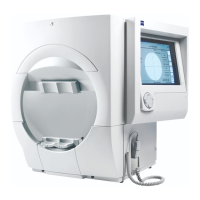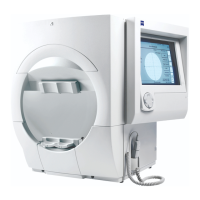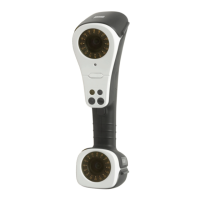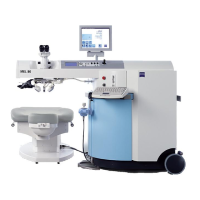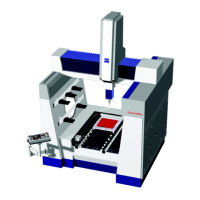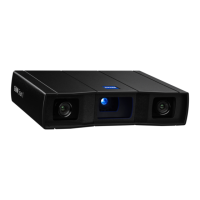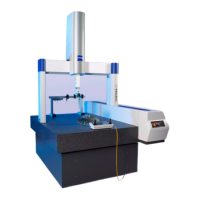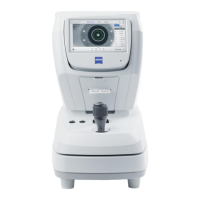HFA3 Instructions for Use 2660021166131 Rev. A 2018-11
Go to Contents Introduction
1-1
(1) Introduction
This introductory section covers general information about the Humphrey
®
Field Analyzer 3
(HFA
™
3).
Operating Principles
A patient's visual field can be assessed by briefly projecting a spot of light (“stimulus”) of known
size, brightness, and location on the inside surface of a roughly hemispherical bowl. Bowl
illumination is controlled to establish a desired contrast between the stimulus and the area around
it. Stimulus location and presentation timing are algorithmically varied to minimize the patient’s
ability to anticipate stimulus location and timing. Stimulus brightness is algorithmically varied to
determine the dimmest stimulus that can be reliably seen at each location. The resulting visual field
map is used by a trained and qualified physician as an aid in diagnosis. Historically, also known as
the Humphrey Field Analyzer (HFA), this instrument is the gold standard of perimetry worldwide.
In addition to static perimetry, the HFA3 allows you to perform kinetic perimet
ry that emulates
manual standard Goldmann perimetry. You can manually select kinetic isopters, or perform custom
scans automatically or step by step.
Intended Use
The Humphrey Field Analyzer is an automatic perimeter which is intended to be used to measure the
visual field of the eye.
Indications for Use
The Humphrey Field Analyzer is an automated perimeter intended to identify visual field defects for
the purposes of screening, monitoring, and assisting in the diagnosis and management of ocular
diseases such as glaucoma and related neurological disorders.
Note: The HFA3 is not intended to be used as the sole diagnostic method for disease.
Patient Population
The HFA3 may be used on all adults and children over the
age of six in need of diagnostic
evaluation of the eye. This includes (but is not limited to) patients with the following disabilities or
challenges:
• Wheelchair user
• Very low or not measur
able visual acuity
• Postural problems
• Fixation problems
• Deafness
• Large body, but not those above 99th p
ercentile based on anthropomorphic data
There is a general requirement that the patient be able
to sit upright and be able to place his or her
face on the chin and forehead rest of the instrument (with or without supplemental human or
mechanical support).
Part of the Body
The HFA3 physically interacts with the patient’s forehead and chin. The patien
t's hand and fingers
(or similar ability) are also required to press the patient response button.
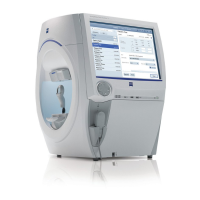
